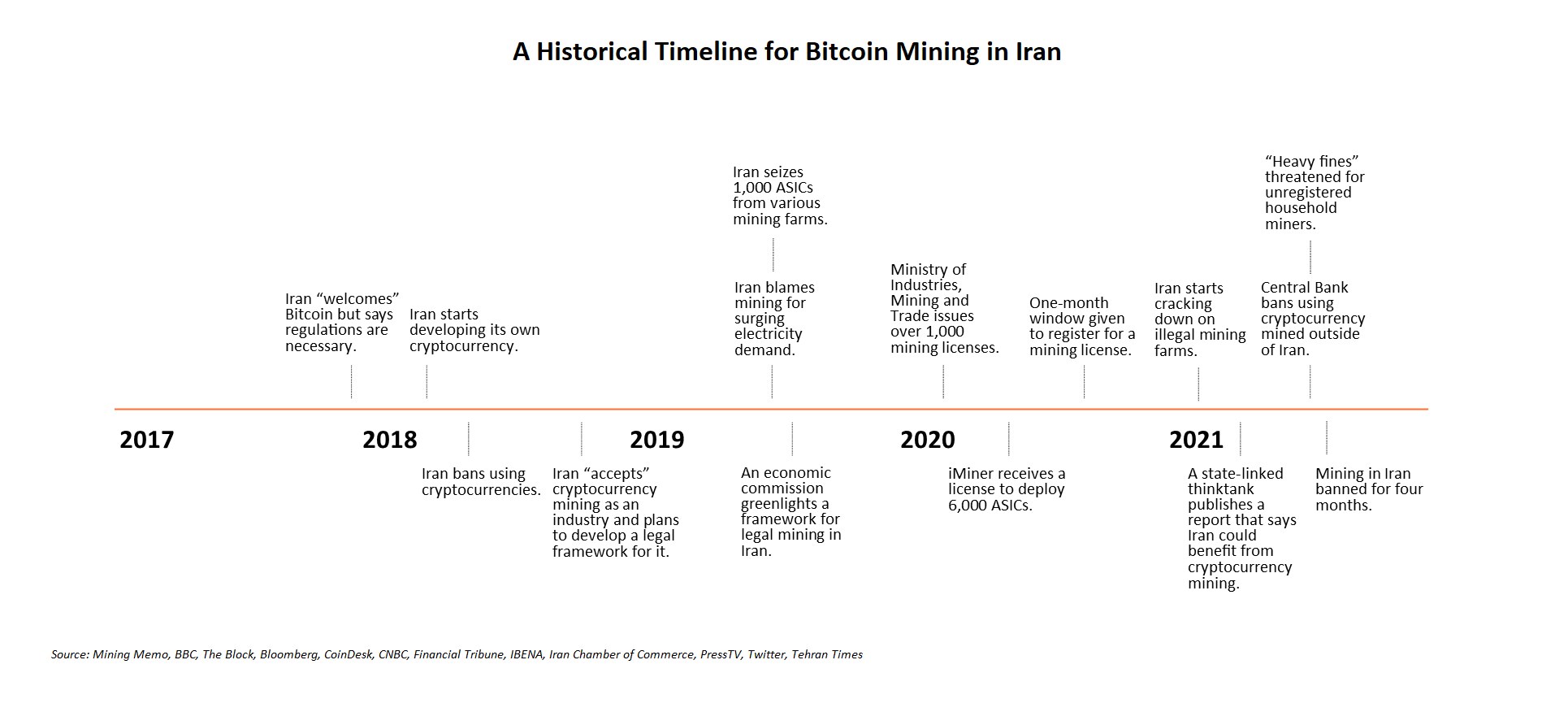Iran has banned bitcoin mining for 4 months in its latest legal pivot away from the begrudged but enduring segment of miners operating within its borders. Iran has flip flopped on cryptocurrency mining for years. As it continues to blame power grid failures on bitcoin mining, the Iranian government is once again working to limit the growth of mining.
Blackouts aren’t new in Iran. Neither is negative sentiment from bureaucrats towards miners. But in a country with an aging and heavily subsidized electricity grid known for being poorly managed and unmaintained, bitcoin mining seems more like a convenient scapegoat than a root cause for Iran’s blackouts.
Prior to its recent four-month mining ban, Iran’s wide-ranging positions on cryptocurrencies and mining have included developing its own token, banning mining, banning bitcoins mined outside Iran, licensing miners, seizing unlicensed mining machines, and more.

Here is a summary of Iran’s history with cryptocurrency mining.
- 2017: Towards the peak of the previous cryptocurrency bull market, Iran’s High Council of Cyberspace said the government “welcome[s]” Bitcoin. But clear regulations are necessary and require time.
- 2018: Iran said it’s working to build its own cryptocurrency while the Iran Central Bank works to control cryptocurrency use. A few months later the use of any cryptocurrencies was banned by the Central Bank. Later in the year, Iran said it “accepted” cryptocurrency mining as an industry but emphasized the promise of a national currency and the need for regulations.
- 2019: Iran’s Ministry of Energy blamed bitcoin mining for a surge in electricity demand and said the nation’s grid was becoming unstable. Not long after that, state-run TV reported that authorities seized hundreds of mining machines. An Iranian economic commission green-lit a framework for mining in Iran one month later.
- 2020: The Ministry of Industries, Mining and Trade issued over 1,000 licenses to cryptocurrency miners, and bureaucrats touted the potential economic gain from a growing bitcoin mining industry. Over the summer, Iran’s Vice President gave all miners a one-month period to register with the government or face punishment for illegal mining.
- 2021: Iran starts cracking down on unregistered mining farms, seizing hundreds of machines. The Central Bank also bans transacting with bitcoins mined outside of Iran. Repeated warnings and threats of heavy fines for unregistered miners come from various government and state-run entities. Iran later bans all mining for four months.
Want more mining insights like this?
How many bitcoin miners are in Iran?
Precisely what share of Bitcoin’s total hashrate comes from Iran is unknown. But some state media reports and slightly outdated research from the Cambridge Center for Alternative Finance provide rough estimates.
- Iranian miners represented 3.82% of Bitcoin’s total hashrate as of April 2020, up from 1.77% six months earlier.
- A spokesperson from Iran’s electrical industry estimated over 148,000 ASICs were operational in Iran as of April 2020, according to local news reports.
تو مسجد بیتکوین ماین میکنند
— رضا مهدوی (@Rmahdavii) June 26, 2019
قربت الی الله pic.twitter.com/cPdOo0g0hK
What’s next for Iranian bitcoin miners?
The legal status of bitcoin mining in Iran after four months (September 2021) is unknown. That Iran will manage to completely repair its energy grid within that timeframe seems impossible. But a much more heavily regulated mining regime is likely. And over the next few months, Iranian authorities will probably escalate their efforts to eradicate unlicensed miners and keep a might tighter grip on the industry’s growth and operations.
Note: The timeline and links in this article will be updated as mining regulations develop in Iran.

